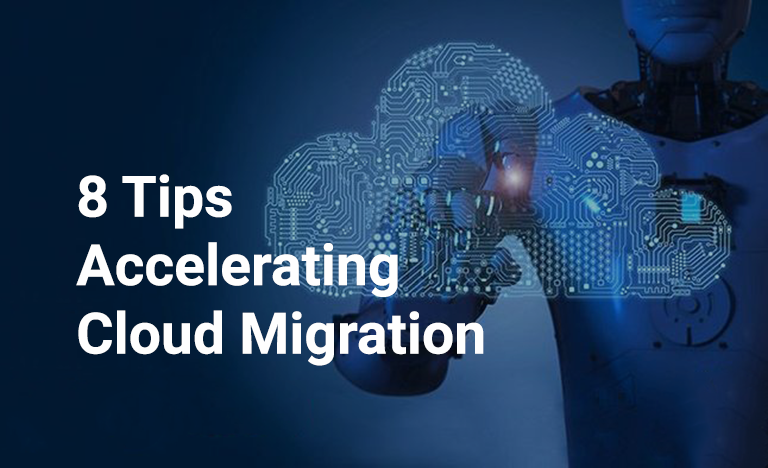Cloud-first is a strategy that most of the enterprises have adopted today. However, many are struggling with the pace, especially around migration, unless it is a merger or acquisition the velocity of cloud migration that is the number of applications moved to cloud is seeing an abysmal rate. This is putting tremendous pressure on IT companies to drive cost optimization to allocate the freed-up resources for good use.
Cloud migration sounds like a simple exercise of picking up applications and putting them as-is on the cloud. However, the lack of acceleration of the process due to multiple reasons outlined below has become a priority for the leadership to address:
1. Organizational Priorities – Generally, within IT, a dedicated function is created to look into creating the infrastructure, and then moving the applications to cloud through the lift-and-shift approach. But other IT functions that manage these applications will also have competing priorities, such as modernization, which take time or offset with some other business priorities that may slow down the progress around migration. In addition, companies are adopting multi cloud strategy, the process of determining the affinity of the app(s) to which cloud is not well defined and this further delay the migration.
2. Lack of investments on Tools – Large enterprises started with migrating the low-hanging applications first with minimal investments in auto discovery, assessment, and migration, which has resulted in significant dependency on application teams. In cases where application teams are not available, the CMDBs were found out to be not fully updated and have had complex integrations. This further negatively impacts the cloud migration agility.
3. Classified Infrastructure – The lack of focus on the creation of landing zones capable of handling export control and high data classification application has resulted in parking these applications which have now become substantial in number.
4. Security Constraints – Security is essential. However, at times, rigid guidelines put tremendous pressure on teams, which make them not challenge the status quo and continue with the apps on the data centers, whereas they could come up with innovative ideas that can balance the risks by reducing the blast radius, or look out for options around database, integration, and tools for upgrading in an automatic manner to the latest versions.
5. Support Teams and Limited Use of Applications – Ideally, the support teams are best suited to migrate the apps to cloud. However, many of the apps they support in their inventory sometimes have almost minimal tickets, and/or they have no knowledge of the application due to limited usage, that can hamper the migration process.
How do we address the constraints listed above?
1. Clear Strategy – Global CIOs must set forward cloud-first strategy with a common priorities in terms of moving to cloud – that is migrate first and then modernize or vice versa, in some cases, decide on the date of pulling off complete data center and work backwards to put a plan on moving the applications to cloud, and establish a common framework for determining the landing zone in case of multi-cloud. This will enable the teams to have clarity and prepare a joint plan to prevent any redundant effort.
2. Gamification – Gamification should be leveraged to drive competitive spirit among the application team, especially the app owners. Gamification will leverage the reward point dashboards by department, CIOs, Apps owners, infra teams etc. that actively participate in migration. Employees are rewarded with points or incentives based on their rate of migration. This ensures more engagement, creates a competitive yet collaborative team environment, and helps the workforce behave differently.
3. Tools – Invest in a tool that helps do auto discovery, assessment and in cases, even migration. This helps save substantial time and effort by making the process faster, and reduce dependency on application teams, especially for applications where limited knowledge exists.
4. Classified Landing Zones and Infrastructure – Automation team(s) should work on priority to create the landing zones for catering to apps with a higher classification, so the bulk in those areas are moved away to increase the speed and get reduce cost in a secured manner.
5. Greater Collaboration – Security, infrastructure and application teams should work closely and come up with innovative solutions for moving applications faster to cloud, especially when there are version issues around binaries used around languages, apps, and web servers etc. For example, to reduce the blast radius.
6. Rationalize and Decommission – In many enterprises, we still have applications wherein it takes significant time to find out who the app owner is. An effort should be made to identify applications that are catering to a limited number of users and look out for aspects around rationalizing and decommissioning them.
7. Embed Infrastructure and Application Team(s) – Lines are getting blurred between infrastructure and application know-how. It is becoming important to set up joint teams for migration wherein there is a right mix of infrastructure and application know-how to do the discovery and design of cloud migration.
8. Drive Innovation – Keep the team motivated by encouraging their participation in doing focused ideation and hackathons where they look at a given problem and come up with innovative solutions that can address the problem as well as let the team learn new things.
In summary, cloud migration is essential for all enterprises. However, it is important to bring in the measures outlined above, and in the right mix, to accelerate the migration process in an efficient manner to ensure that more applications are moved to cloud at a faster rate.



